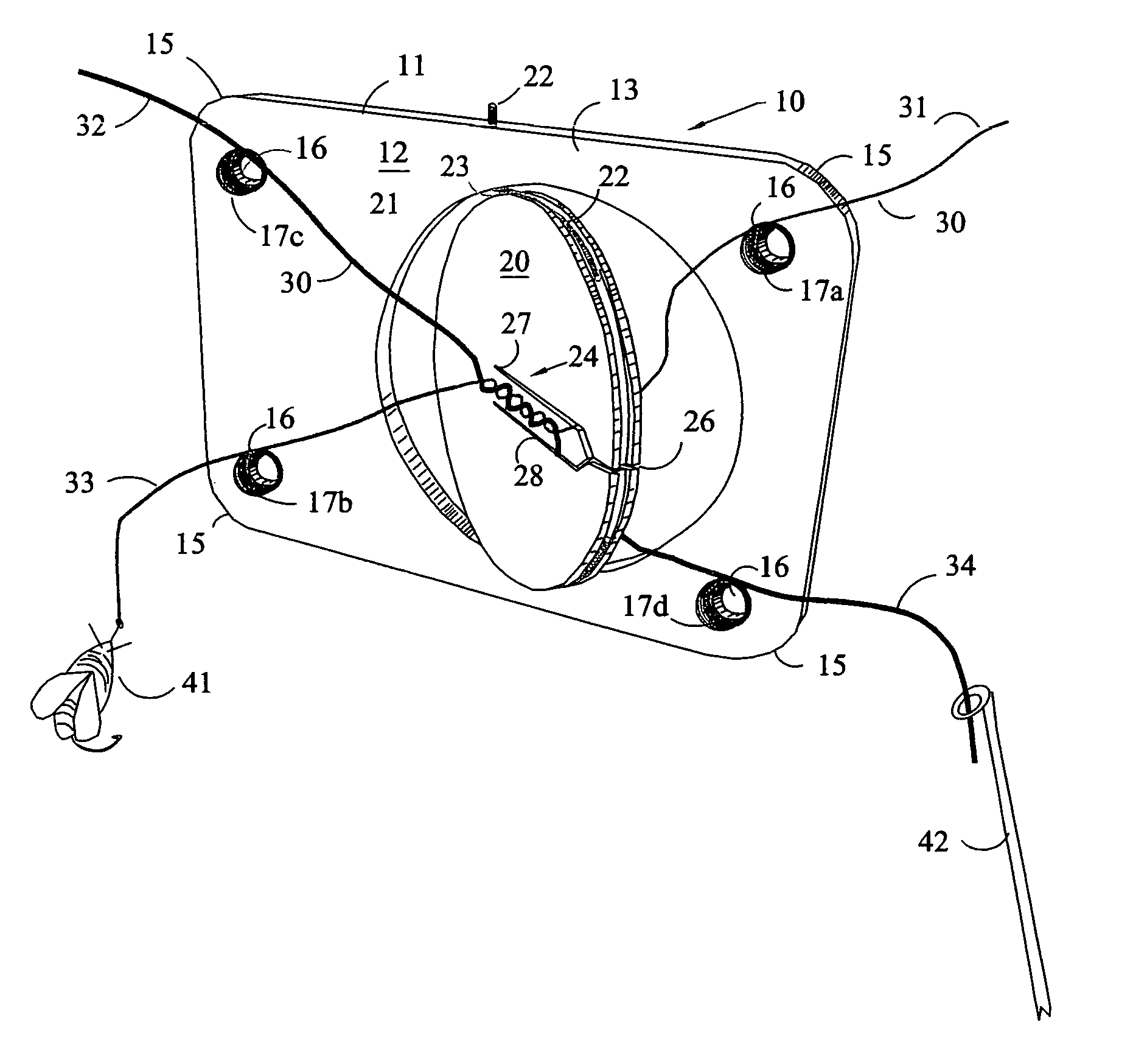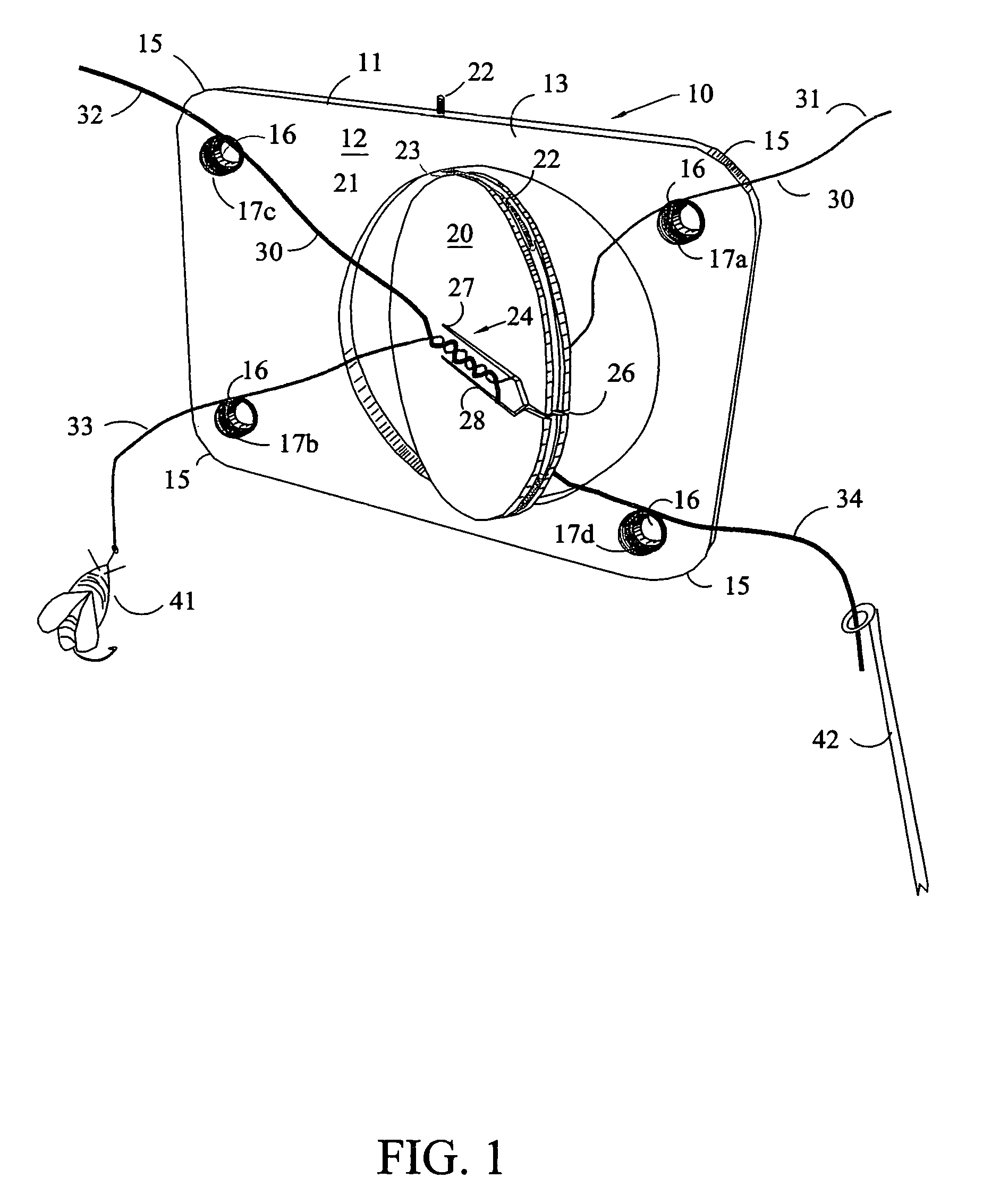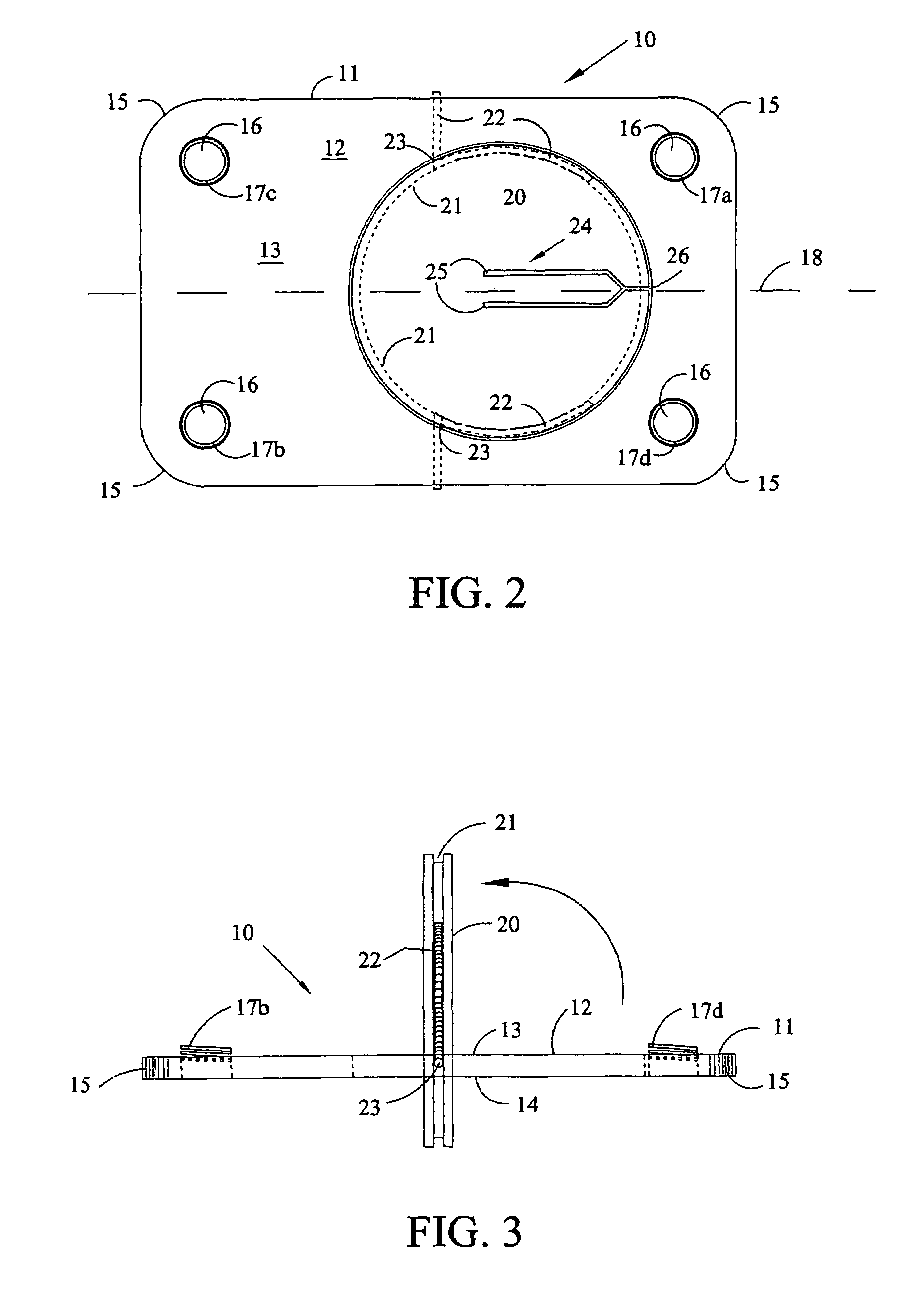Knot-tying device for joining fishing leaders
a technology for knotting and fishing leaders, which is applied in the field of knotting devices for fishing leaders, can solve the problems of difficult and tedious task of tying a fishing line knot to a fishing attachment, large and thick line, and difficulty in adjusting the knot, so as to minimize the difficulty of manually joining, easy manipulation, and not costly
- Summary
- Abstract
- Description
- Claims
- Application Information
AI Technical Summary
Benefits of technology
Problems solved by technology
Method used
Image
Examples
Embodiment Construction
[0030]The present invention will now be described more fully hereinafter with references to the accompanying drawings, in which the preferred embodiment of the invention is shown. This invention may, however, be embodied in different forms and should not be construed as limited to the embodiment set forth herein. Rather, the illustrative embodiment is provided so that this disclosure will be thorough and complete, and will fully convey the scope of the invention to those skilled in the art. Like numbers refer to like elements throughout.
[0031]Now, turning in detail to the drawings, a preferred embodiment of the present invention is shown in FIG. 1, a perspective view of the knot-tying device 10, and FIG. 2, an elevation view of the knot-tying device 10 with a rectangular card body 11 which may be formed in substantially the shape, thickness, and size of a credit card, having a substantially planar surface 12, with a first side 13 and a second side 14, depicted in FIG. 3. The rectang...
PUM
 Login to View More
Login to View More Abstract
Description
Claims
Application Information
 Login to View More
Login to View More - R&D
- Intellectual Property
- Life Sciences
- Materials
- Tech Scout
- Unparalleled Data Quality
- Higher Quality Content
- 60% Fewer Hallucinations
Browse by: Latest US Patents, China's latest patents, Technical Efficacy Thesaurus, Application Domain, Technology Topic, Popular Technical Reports.
© 2025 PatSnap. All rights reserved.Legal|Privacy policy|Modern Slavery Act Transparency Statement|Sitemap|About US| Contact US: help@patsnap.com



